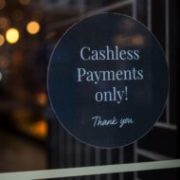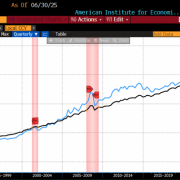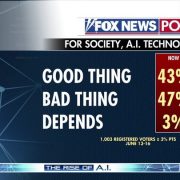Do increases in the minimum wage only manifest themselves in reduced employment? Or are there other not-so-visible, but also not-so-trivial, effects that should be part of the policy discussion? As I will argue with a short anecdote, the consequences of government interfering with private labor contracts can arise in some surprising places.
A Caffeinated Conundrum
There is a small coffee bodega in one of the university buildings where I frequently teach classes. I regularly stopped and purchased a 16-ounce drip to fuel me through afternoon seminars.
One day something mysterious happened. When I pulled out a few dollar bills to pay for my beverage, the barista quickly said, “I’m sorry but we no longer take cash.”
“Why?” I asked.
“We want to serve all of our customers better, so we only take credit and debit cards,” the attendant cheerily replied.
I quickly fired back. “But I am a customer, and I never use a credit or debit card for anything below twenty dollars! This is not serving me better!” (As this was nine years ago, I will let readers ponder whether I still prefer cash.)
The poor employee, visibly flummoxed by my answer, reiterated that he was not allowed to accept cash. In fact, he informed me, to my dismay, that all campus food service locations now refuse cash. (I will further let readers speculate as to whether I paid for the already-poured beverage with a card or left the drink at the counter and left.)
Herein lies a mystery. Why would our university’s food service outlets stop accepting cash? By making it hard for someone like me to pay, wouldn’t they risk losing business? I asked this of my seminar students that day, and several reasonable answers were given.
The first answer was that “nobody uses cash anymore so Professor Gill must be a weirdo and who would want a weirdo as a customer.” While it is true that fewer and fewer people pay with, let alone carry, cash these days (particularly college age students), I do know of enough old faculty like me that prefer greenbacks as the primary means of exchange. The bodega certainly lost my business going forward and probably a few other gray-haired faculty. While we are an old-fashioned minority, cutting off an opportunity for exchange seems like a poor business decision.
The second answer advanced was that going cashless makes sense if you want to prevent crime. Cash is easy to steal and is fungible; credit card receipts are not. Eliminate cash, and you eliminate a major incentive for robberies. This is not such a bad idea considering it has been the rationale for several Seattle-area businesses as crime has risen dramatically in recent years. Nevertheless, our campus in 2016 was not a hotbed of theft and most of the food service outlets make awkward robbery targets based on where they are located. Admittedly, we were starting to see an increase in homelessness on campus, so going cashless may have been a means of trying to discourage vagrants from using our cafeterias.
It’s the Minimum Wage, Stupid
Not satisfied with any of my students’ answers, I started my own investigation into the situation by talking with different cashiers and managers around campus. Most were not actually given any rationale for the change by their bosses; they were told not to accept cash and that is what they did. Nonetheless, one intriguing answer did emerge after a few conversations – it was a way to cut labor costs.
In 2014, the City Council of Seattle passed an ordinance that incrementally increased the minimum wage from $9.47 to $15 per hour over a two year period starting in April 2015. Do the math; that is a 58% increase in the base wage in just twenty-four short months. My university, being the progressive employer it is, typically offers a wage higher than the legislated minimum to benefit work-study students struggling to pay off ever-increasing tuition — a virtuous cycle if there ever was one!
But why should an increase in the minimum wage affect whether or not coffee shops accept cash?
Here’s the rub. If retailers accept dollar bills and coins, employees must reconcile (or “cash out”) their till at the end of shift, making sure that the money they have on hand matches the receipts sold for the day. This is done for bookkeeping purposes and to monitor whether cashiers are pilfering.
But “cashing out” requires time. Not a major amount of time, mind you, but enough so that an employee might spend an additional fifteen minutes on this task. Even if the task only takes a few minutes, the employer is usually required to pay a quarter hour’s wage. At the new minimum wage of $15/hour, that equals an additional $3.75. Calculated as a change from the early $9.47 minimum wage, that is roughly an additional $1.50 per hour that must be paid merely to have an employee count cash.
While such an increase in wage cost seems trivial, remember that the employer was also paying an additional $4 per hour throughout the employee’s entire shift (plus the increase amount paid into FICA at a higher base wage). Moreover, we’re not just talking about one employee. For a campus-wide operation with dozens of outlets, you are paying this added expense across a large number of employees working a large number of shifts across multiple days, weeks, and months. Those costs add up quickly and are often reflected in higher prices that potentially chase away customers.
(The problem is exacerbated for college food service because students have shorter shifts under work-study requirements. Instead of paying one employee fifteen more minutes to cash out after an eight-hour shift, you end up paying two employees an additional 15 minutes each to cash out after their four-hour shifts, 30 minutes. Student workers on short shifts are more expensive than non-students working a full eight hours. It isn’t surprising that my university led the way among local eateries and coffee shops in going cashless.)
If you want to shave labor costs to minimize upward pressure on product prices, simply eliminate the $3.75/hour (or more) you pay employees to reconcile their till. In other words, if you eliminate cash, you eliminate the expense associated with cashing out. When all payments are conducted electronically, employees need only click a single button at the end of the shift and all receipts are tallied automatically. Voila – immediate cost savings!
And so, the mystery was solved. It was a rapid increase in the minimum wage that took away my ability to buy coffee with cash. Customer inconvenience is an economic cost, and it is a cost that is often ignored by econometric studies considering only employment effects of minimum wage legislation.
But Wait…There’s More (of Less Service)!
Undoubtedly, some of you may be rolling your eyes at my analysis. “Prof. Gill, is the minor inconvenience of using a credit card such a major burden relative to the economic gains and social justice that results from paying workers better?” To that, I answer emphatically, “YES!” It matters to me, and I have decreased my on-campus purchase of coffee dramatically since then, preferring to carry a thermos from home now. Customer inconvenience is a real cost, and there is more to it than just having to reach for my MasterCard.
In 2017, a task force of University of Washington (UW) researchers published a report (with updates) evaluating the costs and benefits of Seattle’s rather dramatic minimum wage policy. Interestingly, the team went beyond looking merely at employment effects but also conducted in-depth interviews with several restaurateurs in the city about the adjustments they were making to the policy. Increasing menu prices was one of the primary methods of dealing with the increased labor costs, but restaurateurs and other service-oriented businesses were reluctant to do that given the fear of losing customers in a highly competitive market.
One of the surprising things the UW research team found was that several lower-mid-tier restaurants were eliminating direct table service. Instead of wait staff taking orders at the table, bringing the food, and bussing the tables, customers would order at a counter, pick up their own food, and be encouraged to deposit their dishes at a separate bussing station. In essence, some table service restaurants began to look more like McDonald’s.
Again, this may seem trivial in the grand scheme of things, but losing the experience of table service and the interaction of an attentive server does diminish the overall dining experience. Granted, this did not happen at four-star, white tablecloth establishments that have clientele who can absorb higher menu prices. The restaurants affected tended to serve lower income individuals who suddenly were presented with a lower quality of service. Considering that proponents of higher minimum wages are usually advocates for the poor, it is odd to forget that the poor are not just workers, but customers as well. And why shouldn’t lower income individuals enjoy the benefits of table service at restaurants?
Another key finding of the UW report was that restaurants responded to the increased wage by reducing staff hours. This is noteworthy as previous studies typically focused attention on whether increased minimum wage rates would create greater unemployment, including the famous Card & Krueger “natural experiment” study that showed little effect on layoffs. But such studies viewed labor as a binary variable – you were either working or not.
In reality, labor is a continuous variable; employees can work 40 hours per week or just 30 hours. In Seattle, employers reacted to higher labor costs by reducing hours of their staff rather than laying them off. Finding and training new employees is expensive. Rather than laying off current workers, it made sense to cut their hours and hope there wouldn’t be any corresponding loss in productivity. Ironically, the UW study found that while the average hourly pay for service employees did increase due to minimum wage increases, the reduced hours worked meant that there was little gain (and even a small loss) in overall monthly pay.
But again, it is not just the labor effects that we must pay attention to when evaluating the effects of minimum wage increases. With employers cutting back on hours, customer service takes a hit.
Consider food service once again. While there is some degree of predictability with restaurant and bodega traffic, surprises always occur. A “typical” slow Wednesday might be hit with an unexpected rush of traffic. As restaurants are evaluated not only on food quality but service as well, not having enough staff on hand to handle that rush will likely result in slower service. For that reason, restaurants favor having additional wait staff and kitchen help on hand just in case. With labor costs rising, though, such a strategy becomes untenable in a sector with slim margins. The other option being pursued by several fast food outlets is to simply replace human workers with automated kiosks. While this may work for a quick meal at Burger King, the prospect of this alternative at casual sit-down dining establishments seems horrid.
Owners may also shorten the hours of business, leaving early bird or late-night customers with fewer options (just like my cashless coffee bodega). All of this is likely to create disgruntled customers who spread their bad experiences online or via word of mouth. While anecdotal, many of my acquaintances and I have noted that the quality of restaurant service in Seattle has declined significantly over the past decade and many of us have scaled back our dining habits. And we’re not alone. Fewer people have been eating out and restaurants have been closing in surprisingly high numbers. The impact of a minimum wage increase need not be immediately felt; through the slow decline in service and convenience, an entire sector withering away.
The Bottom Line Isn’t Always about the Money
Policy debates regarding the minimum wage typically focus on labor and whether providing a “living wage” improves the lot of workers or leads to increased unemployment. But that is only one side of the coin. Consumers are also affected by minimum wage policy, be it in terms of higher prices or, as we have seen, declining service and options. These interests must be considered when formulating policy. Government mandates often have unintended consequences, and not in ways that are easily measured.
We all benefit from a vibrant service sector; making it difficult for business to offer quality service and plentiful options for a diverse customer base will only harm the economy writ large.





